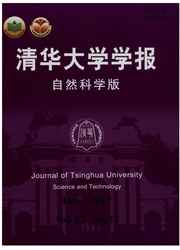

 中文摘要:
中文摘要:
三江源区广泛分布着高寒风沙沉积物。野外调查和测验分析了20处风沙沉积物及15处水力侵蚀沉积物的颗粒级配和矿物成分,并整理了21个国内外活动沙丘和63个水力侵蚀和重力侵蚀沉积物的颗粒级配。研究结果表明:风沙沉积物具有均匀的粒径分布和相对固定的粒径大小,完全区别于其他沉积物。活动沙丘演变为固定风沙土的过程中粘土矿物和腐殖质增加:固定风沙土的粘土矿物含量可达到活动沙丘的2倍,而半固定风沙土局于两者之间,固定风沙土的腐殖质含量可达到活动沙丘的3倍左右。粘土矿物和腐殖质的增加导致沙丘表层颗粒细化,固定风沙土的细颗粒含量可达到活动沙丘的2倍左右,分选系数增加近一倍。
 英文摘要:
英文摘要:
The source area of the Yangtze, Yellow and Lancang (Mekong) Rivers is named Sanjiangyuan in China and is situated in the northeastern Tibetan Plateau. Blown sand deposits are widely distributed in Sanjiangyuan. Field investigations and laboratory analyses were used to determine the size distributions and mineral compositions of 20 samples of blown sand deposits and 15 samples of water erosion deposits from this region. The size distributions of 21 samples of moving sand dunes and 63 samples of water erosion and gravity erosion deposits were also obtained from the literature. The research shows that blown sand deposits in different regions have well-sorted size distributions that are totally different from water erosion and gravity erosion deposits. Moving sand dunes were fixed by vegetation and experience long-term weathering so the clay minerals and humus are increased. The fraction of clay mineral in fixed sand deposits is twice that of moving sand dunes. The humus content in fixed sand deposits is three times that in moving sand dunes. As a result, fixed sand deposits contain twice as many fine particles than moving sand dunes. Thus, sorting coefficient of fixed sand deposits is then twice than that of moving sand dunes.
 同期刊论文项目
同期刊论文项目
 同项目期刊论文
同项目期刊论文
 Rehabilitation of a debris-flow prone mountain stream in southwestern China - Strategies, effects an
Rehabilitation of a debris-flow prone mountain stream in southwestern China - Strategies, effects an 期刊信息
期刊信息
